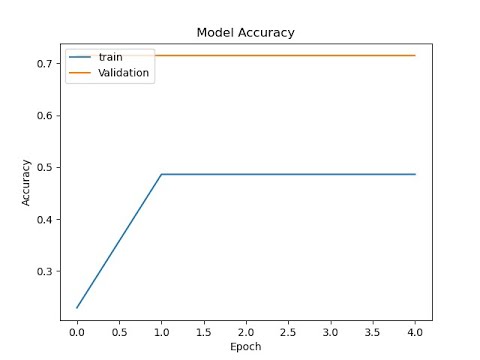Malaria Classification using CNN algorithm-Deep Learning techniques with multiple class classification is achieved with good accuracy.
Introduction
This research holds immense significance in the realms of healthcare, epidemiology, and medical research. Malaria, a mosquito-borne infectious disease caused by Plasmodium parasites, poses a significant global health burden, particularly in tropical and subtropical regions. Accurate and timely classification of malaria cases has numerous advantages implications, thus establishing a critical need for precision in this area.
Early Detection and Treatment:
One of the most immediate implications of accurate malaria classification lies in enabling early detection and treatment. By accurately identifying the specific Plasmodium species causing the infection, healthcare providers can tailor treatment strategies accordingly. Different species of Plasmodium respond differently to various antimalarial drugs, which underscores the importance of timely and accurate classification to ensure that patients receive the most effective treatment regimen. This reduces the risk of disease progression and potential complications, thereby enhancing patient outcomes.
Preventing Misdiagnosis:
Malaria’s overlapping symptoms with other febrile illnesses make misdiagnosis a common occurrence, leading to potential adverse consequences, especially in areas with limited access to diagnostic facilities. Accurate classification plays a pivotal role. This ensures that patients receive appropriate care and treatment, effectively mitigating the risk of incorrect therapies. By minimizing the likelihood of misdiagnosis, accurate classification also reduces the unnecessary use of antimalarial drugs, thereby contributing to the broader effort of preventing drug resistance.
Surveillance and Control:
Accurate classification of malaria cases serves as a cornerstone for effective disease surveillance and control strategies. Public health authorities can design and implement targeted interventions that are tailored to the specific malaria dynamics of a region.
Epidemiological Studies:
The significance of accurate malaria classification is magnified in the context of epidemiological studies. By precisely identifying the Plasmodium species involved in infections, researchers gain valuable insights into disease patterns and transmission dynamics. Epidemiological studies that aid in understanding the broader context of malaria transmission, contributing to the formulation of evidence-based public health policies.
Vector Control:
The varied interactions between different Plasmodium species and mosquito vectors underscore the importance of accurate malaria classification. By accurately determining the parasite species responsible for infections, researchers and health authorities can better understand the vector–parasite relationships that play a pivotal role in disease transmission. This understanding, in turn, guides targeted strategies for vector control, thereby interrupting the chain of transmission and reducing the prevalence of the disease.
Drug Resistance Monitoring:
Another crucial aspect where accurate classification comes into play is in monitoring drug resistance. Different Plasmodium species exhibit varying levels of susceptibility to antimalarial drugs. By precisely classifying cases, researchers and healthcare professionals can closely monitor the efficacy of treatments and swiftly detect emerging drug-resistant strains.
Public Health Planning:
Accurate classification of malaria cases plays a pivotal role in informing public health planning efforts. Precise data on disease burden, distribution, and trends are essential for allocating resources for diagnosis, treatment, and prevention programs. By offering a clear picture of the disease landscape, accurate classification ensures that public health initiatives are effectively targeted, thereby maximizing their impact and efficiency.
Global Health Initiatives:
The significance of accurate malaria classification extends to the realm of global health initiatives. With accurate data as a foundation, international efforts to combat malaria, including initiatives by the World Health Organization’s (WHO) Global Malaria Program and collaborative partnerships, gain the necessary insights to formulate effective strategies and allocate resources where they are most needed.
Research Advancements:
Accurate classification of malaria cases not only supports immediate healthcare needs but also propels advancements in medical research. Insights gained from precise parasite identification contribute to ongoing research into the biology, genetics, and epidemiology of Plasmodium parasites. These findings drive the development of new diagnostic tools, treatment strategies, and interventions, thereby pushing the boundaries of medical science.
Improved Patient Outcomes:
In the broader context, the ultimate beneficiaries of accurate malaria classification are the patients themselves. By facilitating timely and tailored treatment, accurate classification reduces morbidity and mortality associated with malaria. Beyond individual patients, accurate classification also contributes to reducing the economic and social burden of malaria on affected communities and societies as a whole.
What are the algorithm Used in the project?
Malaria classification using CNN algorithmis done using two algorithms, one is machine learning and other is deep learning
- Decision Tree
- Convolution Neural Network (CNN)
What is the project Objective?
The objective of our study is to implement malaria cell type detection system using Convolutional Neural Networks (CNN) from images. There are four classes of detection can be considered, Falciparum, Malariae, Ovale and Vivax detection. Our objective is to implement a machine learning algorithm and a deep learning algorithm and compare their performance. The main aim to classify the given input image to one of four classes by the trained model from input dataset.
What is the number of class or disease types identified?
Falciparum, Malariae, Ovale and Vivax are the types of Malaria disease identified using this project. This is a multi-class classification model. The experimental result shows that our CNN model achieved around 70% of accuracy.

How to check the demo of the project?
Please visit under here
In conclusion, the significance of accurate malaria classification reverberates across various sectors, from individual patient care to global health initiatives and medical research. Its impact extends to improved treatment, enhanced disease surveillance, and the prevention of misdiagnosis. With its multifaceted implications, accurate malaria classification stands as a pivotal pillar in the global effort to control, prevent, and eventually eradicate malaria.
DO YOU WANT TO CHECK THE PROJECT ABSTRACT? Call 9600095046
Similar type of project can checked in our following links
Breast Cancer Detection using CNN algorithm
Liver Disease detection using CNN algorithm
